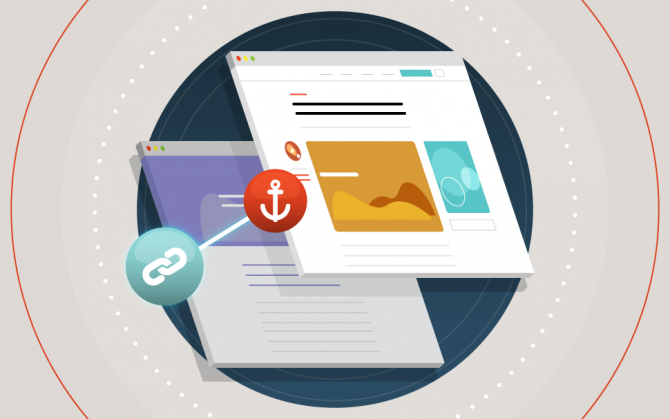
What backlinks are and how to use them
Learn how to improve your website’s authority with backlinks.

What will we see in this post
When we need some piece of information, the common path we take is this: we search for the keyword in search engines, glance at the few first results, and click on one of them. Right?
Only a handful of people spend time thoroughly analyzing all the results provided by search engines. Even fewer are those who look at the second page of results.
That’s why keeping a page among the first results has become increasingly more crucial to digital entrepreneurs.
There are many strategies that can be used to improve the ranking of your posts and make you get to the first positions in search results. One of them is backlinks.
If you haven’t heard of this strategy or still have a lot of questions about it, don’t despair!
This is what this post is all about.
Keep on reading to learn all there is to know about this subject and start using backlinks in favor of your website.
What are backlinks?
Backlinks are links that direct users from one web page to another, be it inside the same domain, or to domains from other people or companies.
In other words, in a text, you may have backlinks that guide the user inside your own website or that direct them to other posts related to the topic matter you are approaching.
With internal backlinks, you make people who are reading your posts access different pages, which are supplemental to the topic. This optimizes their experience and increases the time they spend on your website.
There’s also the possibility of creating backlinks to other websites, especially when the subject matter is not being completely dealt with on your pages, or if you feel the need to provide more information to your readers. In this case, backlinks are added to redirect users to domains you trust and that are an authority in the topic.
And also, there are backlinks that bring people to your site. This occurs when another website or blog adds an external link to your content, redirecting their users to one of your pages.
By doing so, these websites are saying that you are an authority in that specific subject and can answer questions that they have.
Using backlinks correctly is an important inbound marketing and SEO strategy, as it helps ensure a great ranking on search mechanisms and increase traffic to your website.
However, there are two different kinds of backlinks and you should learn what these differences are to be able to use them correctly.
Dofollow links
Dofollow links are links that convey authority from one page to another.
If you talk about technology on your blog and a major portal in the same field adds a link to your page, this reinforces the relevance of your content and boosts your image as an authority in that topic.
The same happens when you add dofollow links to your own website.
By directing users to pages you consider to be relevant, you reinforce the importance and credibility of those websites.
In short, adding dofollow links shows users that you trust those pages, which increases traffic and relays a positive image to Google, which notices the value of the pages being suggested.
However, if your external links lead users to untrustworthy websites, not only will it harm their experience, but also your reputation. This also holds true when you get links from suspicious sources.
Nofollow links
On the other hand, links identified as nofollow do not convey authority between pages.
Adding this tag to a link means avoiding the creation of a relationship with the site that’s being linked to. This may be useful to those who need to mention an unreliable source and with questionable content, which must be avoided at all costs.
Another use of nofollow links is to avoid that the links added to comments are read as backlinks by Google, which can affect your page’s ranking.
What are backlinks for?
The main role of backlinks is to help improve the user’s experience.
The correct use of this strategy shows people where they can find content that better explain certain subject matters and terms that have been used in your text.
On a blog aimed predominantly at women, you may find a post about the economy. When writing this content, you may not be able to cover all the points, no matter how comprehensive your text is, right?
If your blog does not focus on this specific topic, you may then recommend pages that are an authority on finances for women, for instance.
This way, you point your users in the direction of where they will find more information that adds to what you wrote.
The important thing here is to choose trustworthy websites, those who do not compete with your blog, and that may truly add value to your audience.
What is the relevance of backlinks?
As we mentioned above, backlinks are used to provide a good experience for your users, but we cannot dismiss how important they are in your SEO strategies.
When your website or blog shows up on other reliable sites in your niche, search mechanisms notice the relevance of your page.
This is crucial for your blog to achieve top positions and attract organic traffic.
Having good backlinks directing people to your page means the same as telling Google that what you share is truly valuable and deserves recognition, consequently being shown as one of the main results when people search for keywords.
How to get quality backlinks?
Now you know the importance of paying close attention to link building on your pages, it’s time to find out how to get high-quality backlinks.
Some websites pay for the backlinks they get, but you should definitely avoid this strategy. Besides not promoting a good user experience, you also run the serious risk of being penalized by Google, which will harm the ranking of your page.
There are some good practices you can follow to get high-quality backlinks. Let’s check them out:
Create useful and appealing content
One of the most important ways of getting quality backlinks is to create content that is truly valuable and relevant to your audience.
Of course, this is also the hardest part of it all. However, if you really want to achieve excellent results and get recognition, there’s no escaping it.
By posting truly interesting and complete content, you start being noticed not only by your users but also by people responsible for other pages in your niche.
Besides sharing appealing material, include external links to recommend websites or blogs from trusted sources. This kind of link helps in the recognition of your page, and, most importantly, it increases your chances of getting backlinks in return.
Show engagement in partner pages
If you want that pages in your niche notice your presence and start interacting with what you post, nothing better than taking the first step yourself.
By accessing websites and blogs to like, comment, and engage in their actions, you increase your visibility to users and show people who run these sites that you are genuinely interested in what they share.
Think of this engagement as an excellent opportunity to develop partnerships.
Find out what your competition’s backlinks are
To learn about where it will be advantageous to get backlinks, it’s crucial to find out what domains recommend your competitors.
There are tools that you can use to have access to this information, such as SEMrush.
When you discover which pages from your competition are getting good backlinks, you can work even harder to create content that is even more complete and appealing.
This way, you will be able to convince the people responsible for these websites that your page offers the best information about a specific subject matter, that it has more authority and that it is the best one to get backlinks.
Develop strategic partnerships
You have probably visited blogs and websites with content written by invited authors. This kind of content is known as a guest post, and it’s an excellent way of getting high-quality backlinks.
To develop strategic partnerships, you have to take the time to learn about your niche and thus identify the ideal partners for your digital business.
Look for pages that focus on topics that are relevant to your audience and that can add real value to your domain’s visitors.
When you find partners, you also create opportunities to exchange posts on topics you are perceived as an authority, which will, in turn, make your pages and theirs much richer. And that will definitely lead to a better user experience, besides getting more new readers.
These exchanges of content are essential to improve the visibility of your website and your rankings on search engines.
Regardless of the strategy you choose to exchange backlinks, you should start right away, and guest posts are probably the way to go. And if you have any other ideas on how to get high-quality backlinks for your page, let us know in the comments section below!




